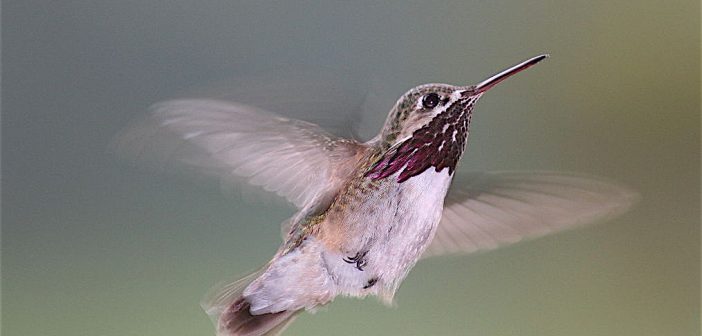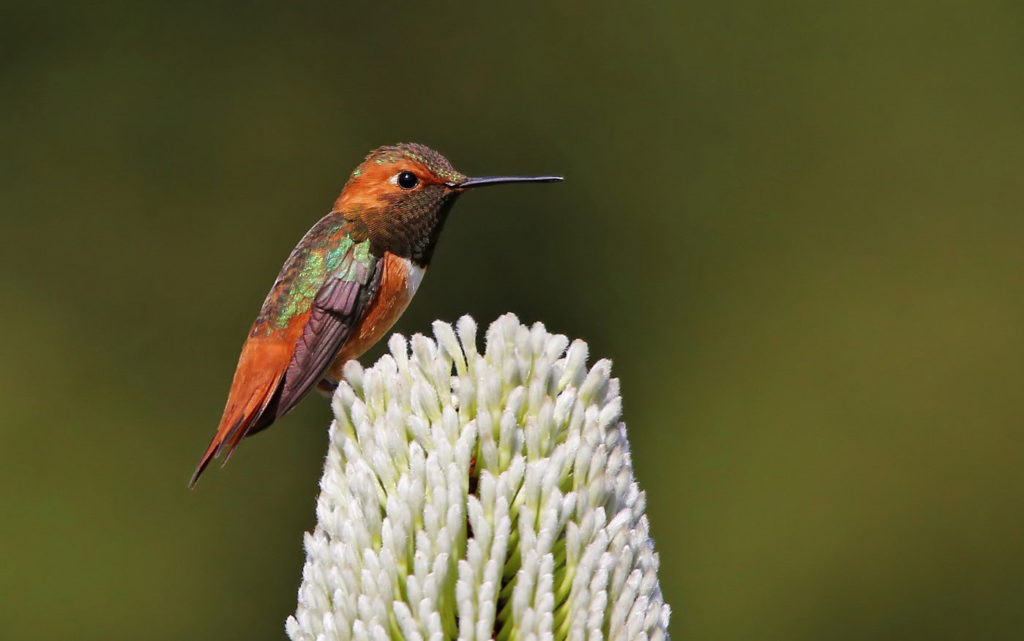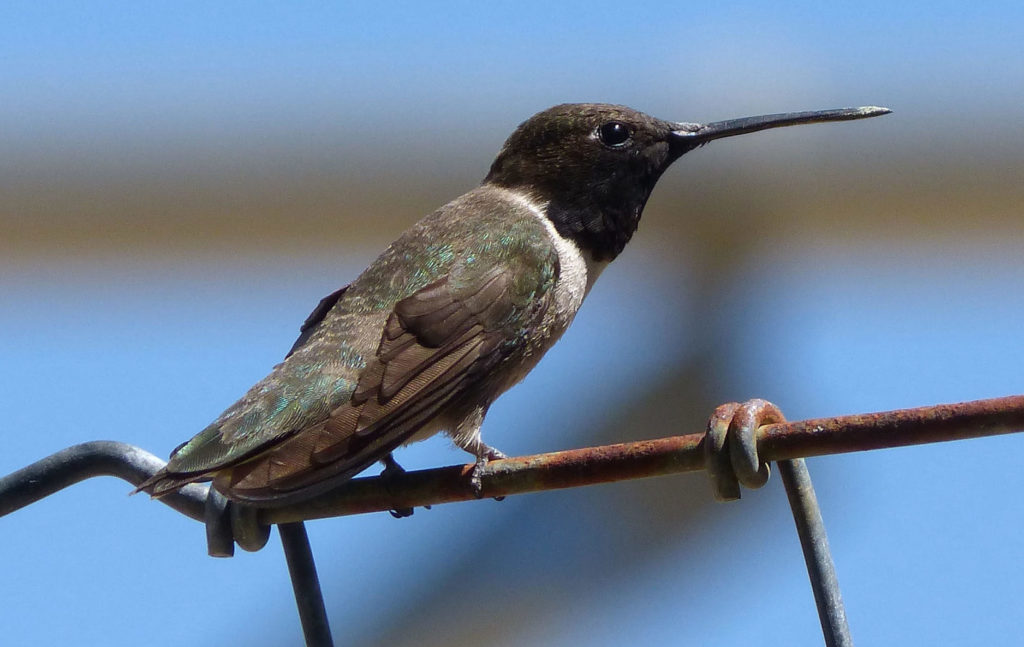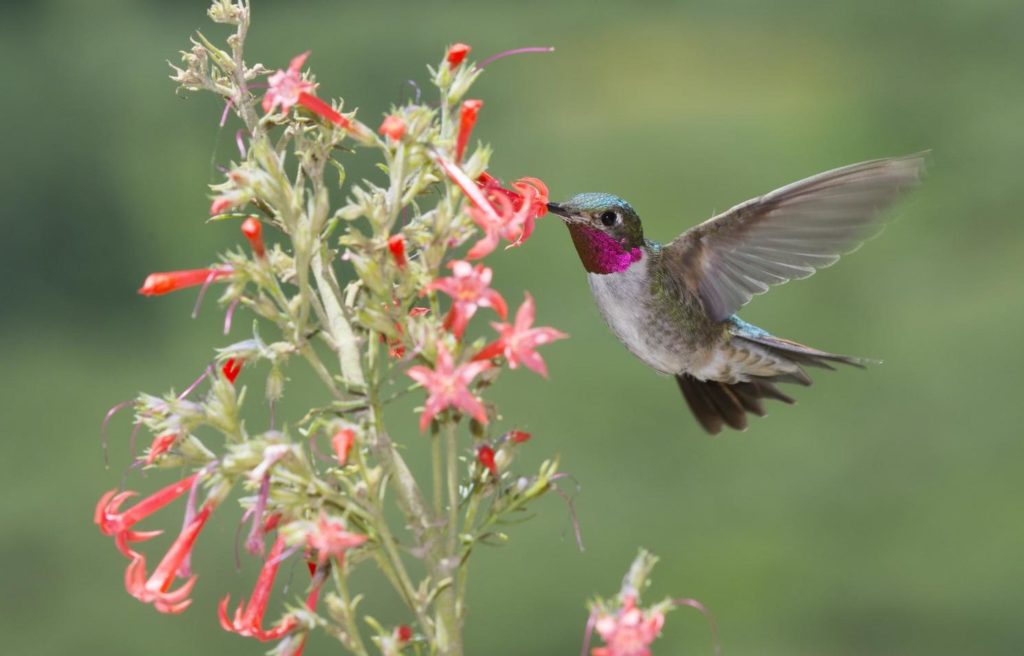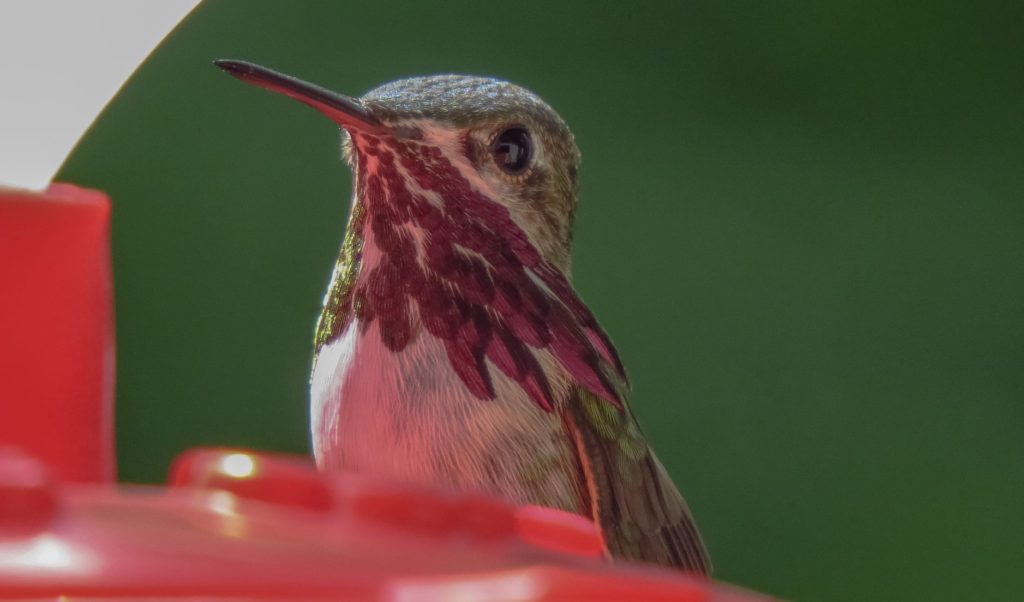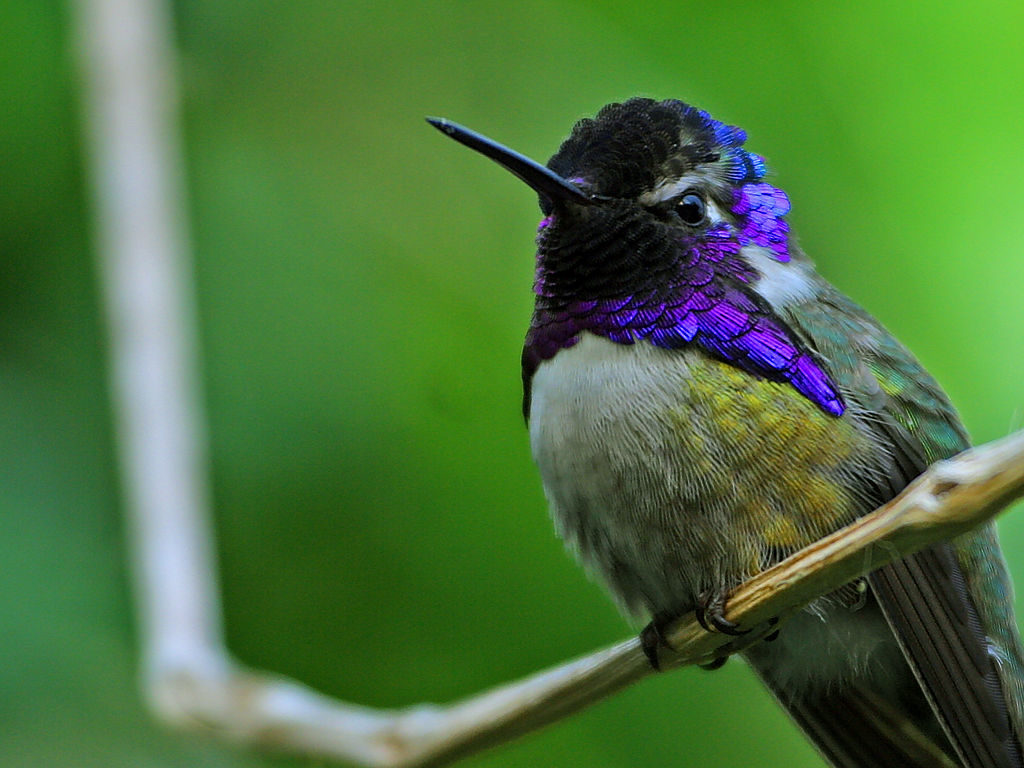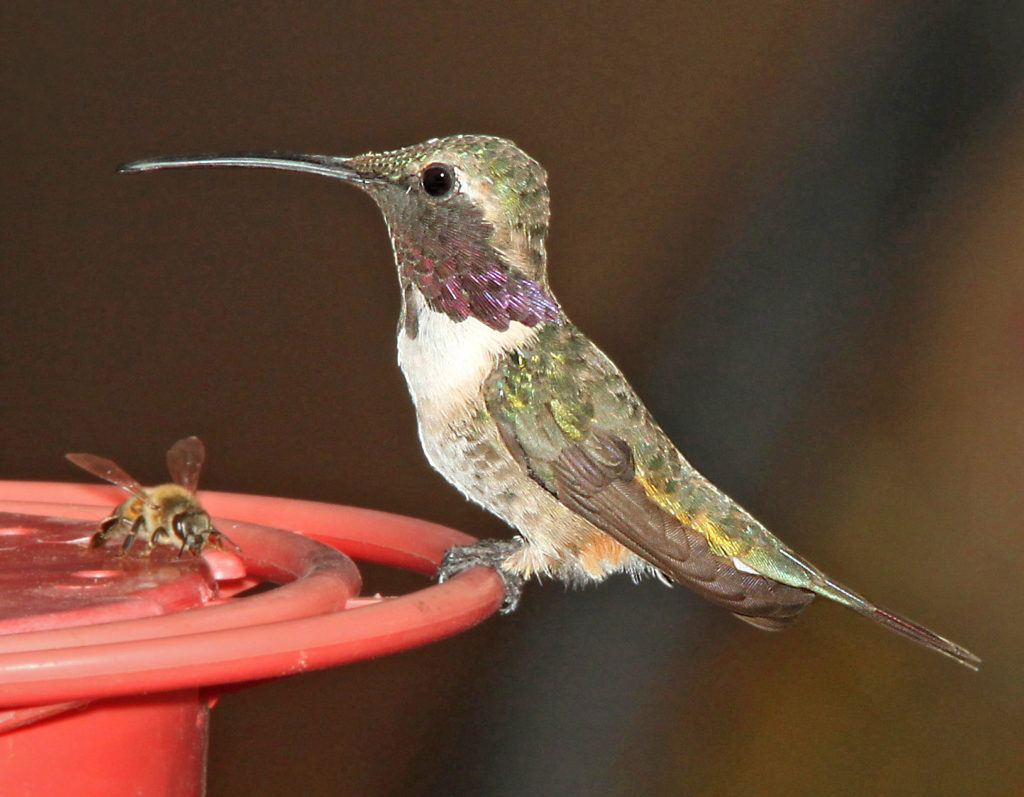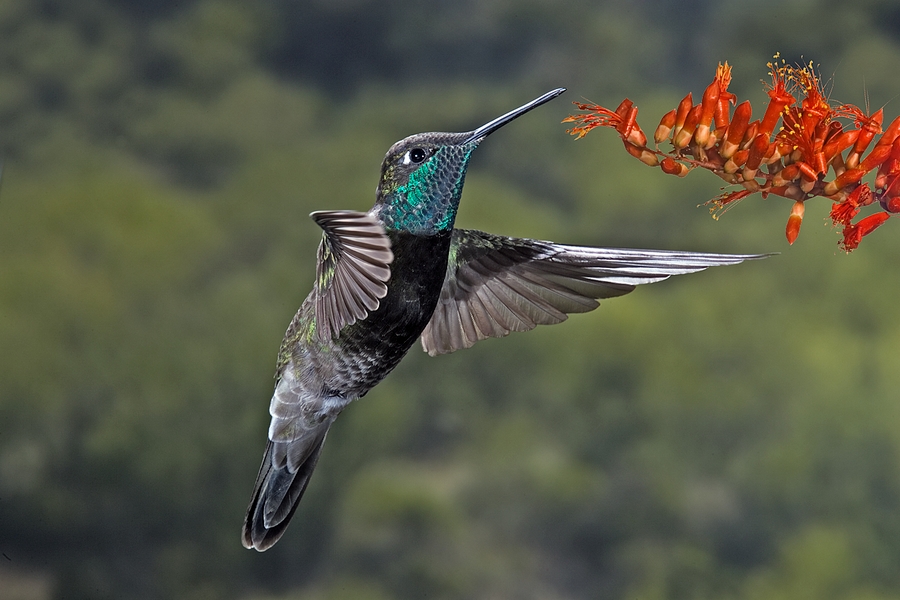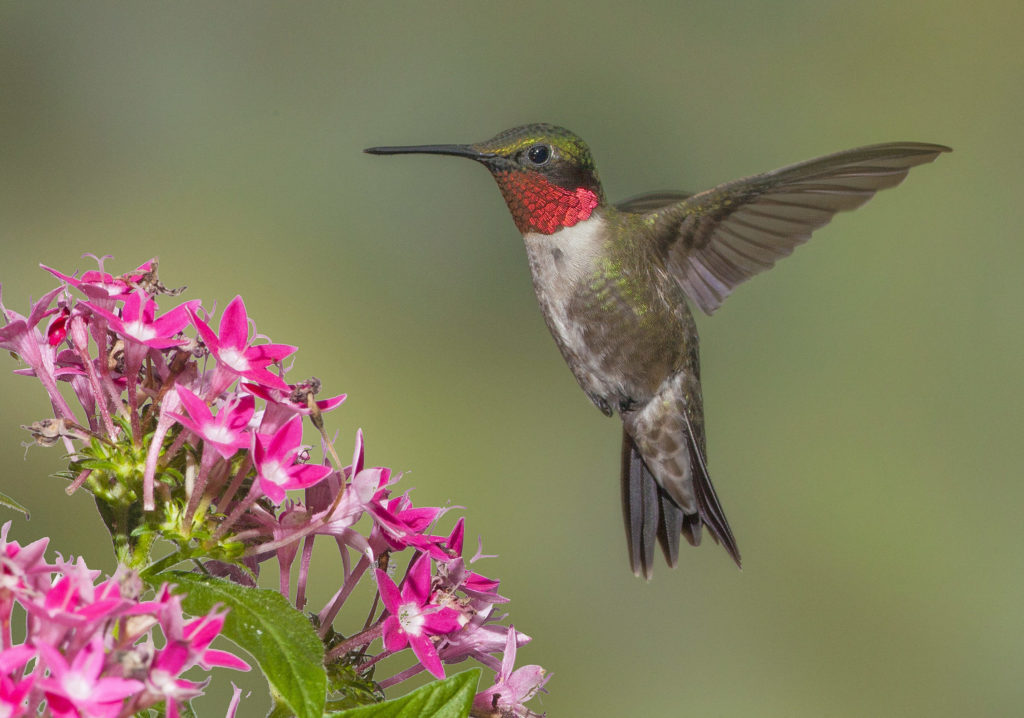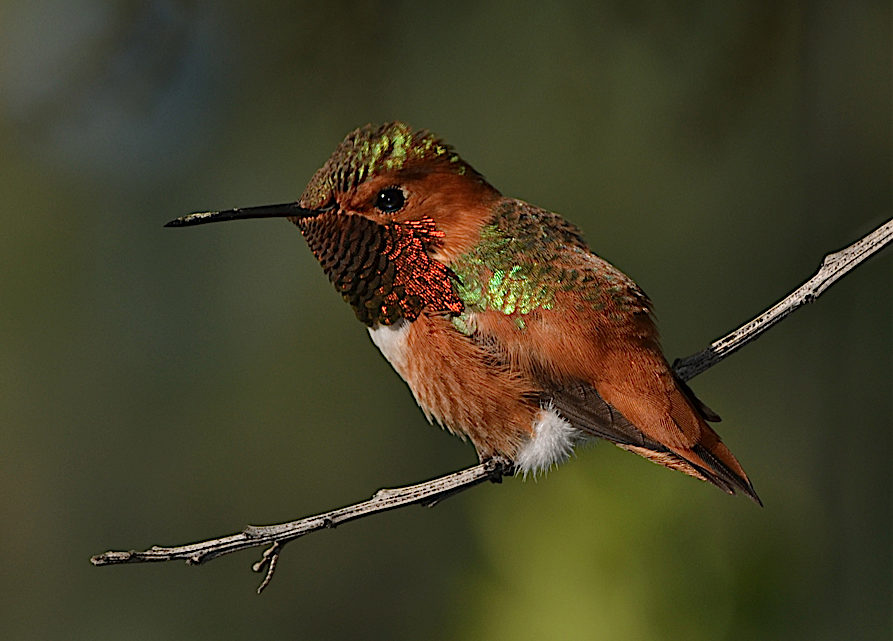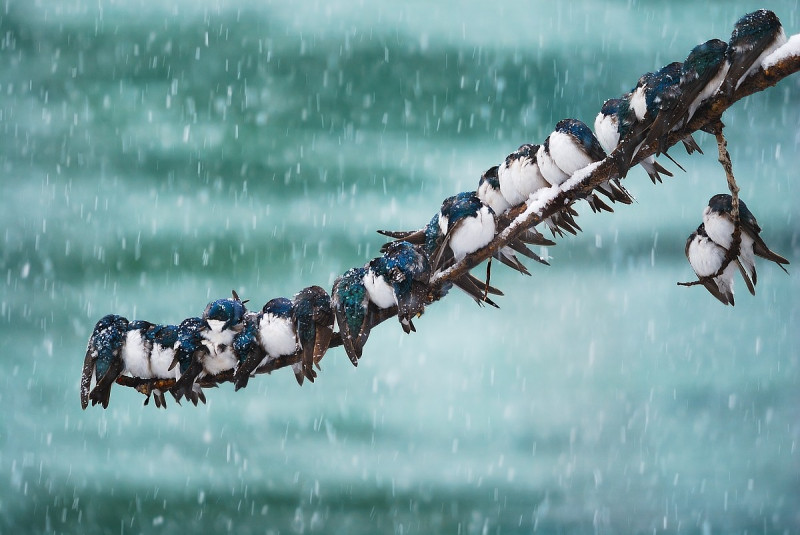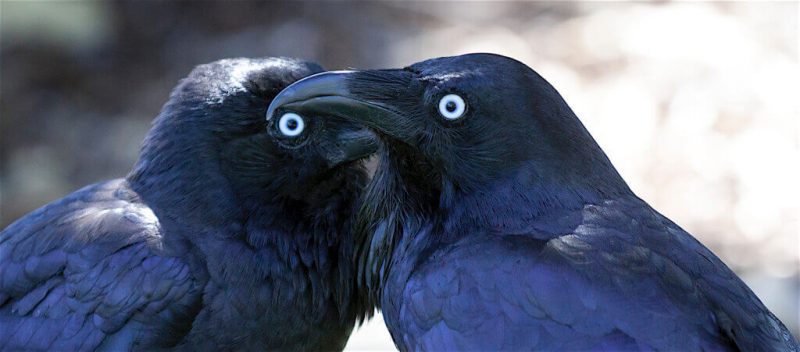The tiny Calliope Hummingbird flies from Central America to the United States and Canada every spring—and back again in the fall! Some Ruby-throated Hummingbirds fly a path north across the Gulf of Mexico to the U.S.—that’s non-stop—more than five hundred miles over water. And return in the fall! They’re just two of the remarkable North American hummingbirds that migrate thousands of miles. Just imagine the endurance and determination that it requires! Imagine, too, a nickel in your hand—because that’s how much they weigh!
For hummingbirds, a trip fraught with danger
Their journey is filled with danger. Weather extremes, for one: They may face extraordinary heat or cold or drought conditions that make water hard to find; heavy rains can force them to the ground; strong winds may blow them into obstacles.
Predators are another danger. Larger birds, rodents, snakes, and even large dragonflies and spiders are known to kill hummingbirds. Cats, too. Windows kill when they reflect trees and fool birds that crash into them.
With such obstacles ahead, what compels these tiny birds to migrate? Well, a couple of things. First, as winter ends and hours of daylight increase, it triggers a hormonal change that urges them to start moving north (and vice versa in the fall). Secondly, they’re tropical birds that began expanding their ranges northward in the summer and discovered abundant food and nesting resources in N.A.
They’re noted for drinking nectar, which gives the impression that it’s their primary food. But, as Hummingbirds.net aptly puts it, “. . . nectar is just the fuel to power their fly-catching activity . . .” 1 Insects, in fact, are their primary diet. So, when fall comes and bugs go into decline, the birds have another strong incentive to move south.2
Nine valiant hummingbird species migrate to N.A. Here are the areas they fly to and from, along with the range of times during which they will arrive and depart. In the colder northern states, expect them to arrive a bit later in the spring and leave earlier in the fall.
Allen’s Hummingbird (Selasphorus sasin)
The Allen’s bears a strong resemblance to the Rufous Hummingbird. Males and females look alike, except that males reveal an iridescent reddish-orange throat when the sun strikes it, while a female’s throat is speckled. They move up and downslope following seasonal food sources from the central Pacific Coast of Mexico and the northern part of the U.S. West Coast.
Arrival: January to April. Departure: July and August. Weight: 0.13 ounces (3.7 g), about the weight of a U.S. dime. Length: 3.5 inches (8.9 cm); Wingspan: 4.3 inches (10.9 cm).
Black-chinned Hummingbird (Archilochus alexandri)
A black face and chin identify the males, and if you can catch the sun reflecting off it, the throat’s base will flash purple. Females are lighter overall, with a pale throat. During courtship and in territorial disputes, males perform a display by diving 60 to 100 feet (20–30 m) to impress females. These hummingbirds migrate from Mexico and the western U.S. to southern British Columbia and back.
Arrival: mid-March through May. Departure: mid-August through September. Weight: 0.1–0.2 ounces (2.8–5.7 g). Length: 3.5 inches (8.9 cm). Wingspan: 4.3 inches (10.9 cm).
Broad-tailed Hummingbird (Selasphorus platycercus)
A throat patch that flashes rose-magenta in the sun distinguishes these males, while females have green spots on their throats and cheeks. Their summer range can have some very cold nights, so they rest in a state of torpor (a reduced metabolic rate), which lowers their body temperature to 54°F (12.2°C). They migrate between Central America and scattered areas of the western U.S., including the south-central Rockies.
Arrival: March and April. Departure: September through late October. Weight: 0.13 ounces (3.6 g). Length: 3.0–3.5 inches (7.6–8.9 cm). Wingspan: 5.0 inches (13 cm).
Calliope Hummingbird (Stellula calliope)
Males and females are greenish above, and the male discloses a magenta throat when seen in the light. Named after the muse in Greek mythology who presides over eloquence and epic poetry, but that doesn’t mean these birds are delicate in disposition. Although the smallest birds in the U.S. and Canada, they’re feisty and known to chase birds as large as Great-tailed Hawks! They’re the smallest migrating birds in the world and move between Central America and the western U.S. and Canada.
Arrival: March to late May. Departure: July and August. Weight: 0.1 ounces (2.8 g). Length: 3.5 inches (8.9 cm). Wingspan: 4.3 inches (10.9 cm).
Costa’s Hummingbird (Calypte costae)
Male and female Costa’s have a green back, and males have an iridescent purple crown and throat. They need the nectar from at least 1,840 flowers to meet their daily energy needs! Costa’s Hummingbirds migrate between Mexico and Baja California, Mexico and the southwestern U.S. Occasionally, one is seen as far north as Alaska.
Arrival: January to March. Departure: May leave desert areas as soon as late May. Weight: 0.1 ounces (2.8 g). Length: 3.5 inches (8.9 cm). Wingspan: 4.3 inches (10.9 cm).
Lucifer Hummingbird (Calothorax lucifer)
Male and female Lucifer Hummingbirds have a green back, narrow forked tail, and curved bill. The male has a beautiful purple throat when the light catches it. They migrate between Central America and extreme southern Arizona, New Mexico, and Texas. They’re found in scrubby areas and favor agave flowers when available.
Arrival: Early April. Departure: Early October. Weight: 0.1 ounces (2.8 g). Length: 3.5 inches (8.9 cm). Wingspan: 4.0 inches (10.2 cm).
Rivoli’s Hummingbird (Eugenes fulgens)
The Rivoli’s Hummingbird is also known as the Magnificent Hummingbird. Judging by their appearance, doesn’t “Magnificent” seems the more suitable name? When light strikes them just right, they’re a blaze of color, especially the males. The second-largest hummingbirds north of Mexico, they have one of the highest recorded heart rates of any vertebrate in the world at 420 to 1,200 beats per minute. They migrate between Central America and the southern tip of Arizona and New Mexico.
Arrival: Late March. Departure: Late October to early November. Weight: 0.2–0.3 ounces (5.7–8.5 g). Length: 4.5–5.5 inches (11.4–13.9 cm). Wingspan: 7.0 inches (18 cm).
Ruby-throated Hummingbird (Archilochus colubris)
These beautiful hummingbirds are the only ones that breed in eastern N.A. We may see them fly or perch, but we’ll never see them walk. That’s because, like all hummingbirds, their legs are too short for that—the best they can do is shuffle along on a branch. They migrate between Central America and the U.S., mostly east of the Mississippi River, and into Canada. Thousands migrate back and forth across the Gulf of Mexico, five hundred miles non-stop. There are populations that live in southern Florida and along the Gulf Coast year-round.
Arrival: Early March to mid-May. Departure: Late July to late October. Weight: 0.1–0.2 ounces (2.8 to 5.7 g). Length: 2.75–3.5 inches (6.9–8.9 cm). Wingspan: 3.0–4.3 inches (7.6–10.9 cm).
Rufous Hummingbird (Selasphorus rufus)
Tiny but rugged, Rufous Hummingbirds make one of the longest migrations in the world, as measured by body size. They travel 3,900 miles between Mexico and western N.A., including southern Alaska. They’re aggressive and territorial at feeders.
Arrival: February to May. Departure: June to August. Weight: 0.1 to 0.2 ounces (2.8 to 5.7 g). Length: 2.75– 3.5 inches (7.0–8.9 cm). Wingspan: 4.3 inches (10.9 cm).
1 “Migration Basics,” Hummingbirds.net
2 We can assist hummingbirds during their migration by providing nectar to help them along. So, hang nectar feeders out a little before you expect the first arrivals. The “nectar” is simply a sugar solution, and it’s easy to make: four parts water to one part sugar, and don’t use red dye, as it’s unhealthy for them. Shake the solution until all sugar is dissolved. Refrigerate any unused portion. That’s it! Keep the nectar feeder clean and replace the solution every few days. It’ll last longer in cool weather, but don’t let it become murky, a sure indicator it’s getting moldy.
More reading:
Hummingbird nectar recipe
World’s smartest birds
Hummingbirds of North America

